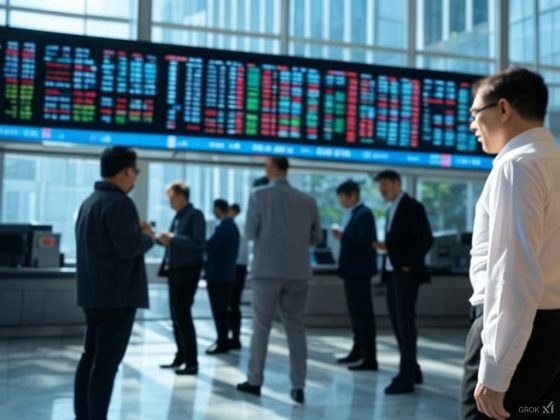The upcoming election in Australia will gauge public opinion on nuclear energy as a solution to the country’s long-term energy requirements and rising living costs.
However, immediate energy transition plans may be hindered by energy security concerns arising from grid instability, power shortages, an impending gas shortage, and infrastructure limitations, Rystad Energy said in a release.
Australian voters will decide between the Labor government’s target of 82% renewable energy and the Liberal-National Party’s (LNP) plan to replace coal generation with 13 gigawatts (GW) of nuclear power by 2051.
Australian election focus
Rystad Energy’s research estimated that reaching the 82% renewable energy target will be difficult.
Even the most optimistic projections under Labor foresee a renewable energy share of approximately 65%, which falls 17% short of the target.
If the LNP wins, the country’s renewable energy share is expected to be lower due to the party’s focus on nuclear power, making the 82% target a distant goal, according to the Norway-based energy intelligence company.
This also highlighted the underlying challenges affecting Australia’s energy transition, regardless of which party emerges victorious.
Rystad Energy’s latest research emphasised the critical need for gas and LNG in Australia, as clean energy reliability takes center stage in the lead-up to the election.
The retirement of coal and gas plants, such as Yallourn West and Eraring, is projected to cause capacity shortfalls in New South Wales, South Australia, and Victoria by 2028.
Role of LNG and gas in transition
Gas generators and gas-peaking facilities will be essential to offset this loss, especially during periods of peak demand, Rystad said.
Additionally, batteries and pumped hydro are projected to play a key role in addressing grid instability in one of the world’s most volatile electricity markets, with an estimated 3 GW expected to be energized by the end of the year, according to the company.
However, infrastructure bottlenecks and longer supply wait times may hinder the timely development of renewables and energy storage, significantly affecting energy security for Australians, the research firm said.
“NSW, VIC and Tasmania (TAS) are already testing their gas supply security for winter with steeply declining production from legacy offshore Victorian fields increasing their reliance on Queensland,” said Kaushal Ramesh, Vice President, Gas & LNG Research, Rystad Energy.
Compared to the crisis year of 2022, these states now have severely diminished buffer capacity, which could trigger another price surge if multiple supply and demand shocks occur. Even in our most optimistic scenario, LNG imports to Australia are looking like an inevitability.
Rystad Energy forecasts that a Labor win in the upcoming federal election will result in Australia adding a record-breaking 7.2 GW of renewable energy and gas capacity annually, mainly in Queensland, Victoria and New South Wales.
This would be the highest annual increase in Australian history.
An LNP victory, on the other hand, would likely lead to decreased solar and wind power deployment, although the extent of the reduction is uncertain.
Rising adoption
“Renewable energy adoption is accelerating at unprecedented rates, and Australia is at the forefront of a battery revolution.
However, more action is urgently needed to prevent a power shortfall in the coming years,” Gero Farruggio, Head of Australia, Rystad Energy, said in the release.
The decisions made now to address the critical levels of dispatchable generation capacity in Australia will be vital in preventing blackouts.
This issue extends beyond Australia, as an increasing number of countries globally depend on gas to support their energy transitions, Faruggio added.
“This global shift is driving a surge in demand for gas-powered generation, resulting in longer lead times for the delivery of critical heavy turbine equipment.”
“The window of opportunity to mitigate these challenges is rapidly closing. If we do not act swiftly, we risk an inflationary bubble caused by soaring gas and power prices, resulting in a heightened cost of living for consumers,” Faruggio noted
Energy capacity growth
Renewable energy investment in Australia is expected to peak in 2025, with the largest contributions coming from the Kidston pumped hydro project and the Kurri Kurri gas plant.
The expected energised capacity for utility battery in 2025 is 2.9 GW, Rystad said.
Due to the rapid construction and energisation timelines for batteries, there is potential for this number to increase.
These batteries will add an estimated 1.7 to 2.0 terawatt-hours (TWh) of annual demand to the grid, according to the estimates.
“This will add stability to the Australian market by shifting daytime solar output to the evening peak.
However, the retirement of aging coal plants, winter heating demand when solar output is low and extreme weather events still need to be addressed,” the research firm said.
Gas prices are subject to both domestic and international market forces.
The cost structure of gas generation facilities will be impacted by gas prices, although the volatility of gas prices is expected to subside.
Gas peaking plants could provide backup support. These factors will be crucial in shaping the future.
The post Gas and LNG remain crucial for Australia’s energy future despite nuclear debate, says Rystad appeared first on Invezz


